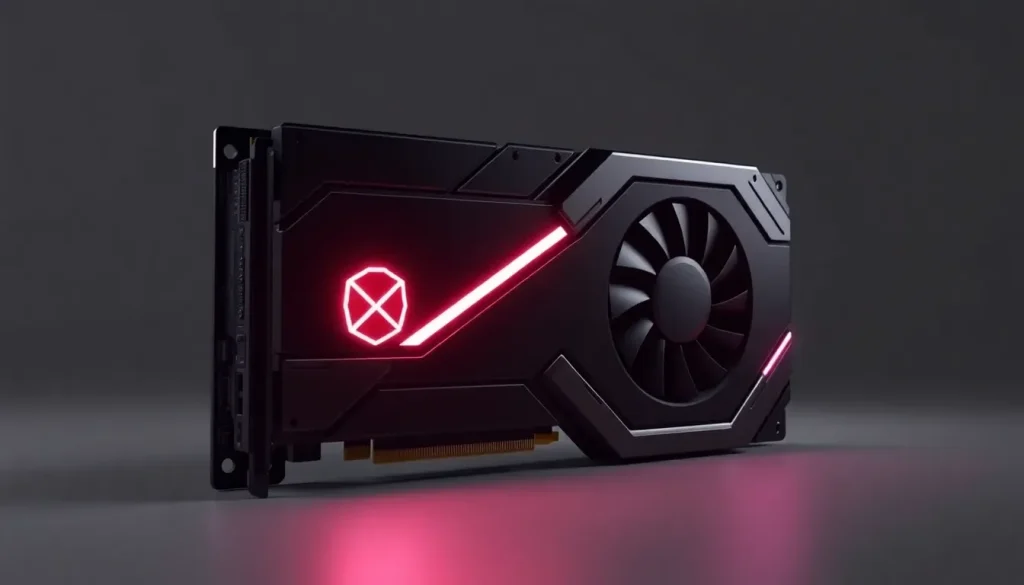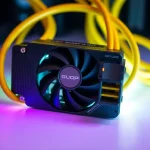AMD Magnus Xbox APU features 68 RDNA 5 CUs and 48GB GDDR7 memory

The gaming landscape is on the brink of a significant transformation with the anticipated release of Microsoft's next-generation Xbox console, codenamed Magnus. With advancements in processing power and graphics capabilities, this console could redefine gaming experiences. As we explore the potential of the Magnus, we uncover how it compares to competitors and what it means for the future of gaming.
Understanding the Xbox Magnus APU
The Xbox Magnus is expected to feature a remarkably larger APU compared to the upcoming PlayStation 6, potentially delivering up to 33% higher performance. This APU is designed to measure around 408 mm², integrating advanced Zen 6 CPU cores along with RDNA 5 GPU compute units. Such enhancements suggest that the Magnus will cater to gamers demanding superior performance.
Notably, the Magnus APU is purportedly engineered as a hybrid device, functioning seamlessly as both a console and a PC. This innovative design enables support for Windows and various third-party platforms, suggesting that Microsoft is steering the console landscape toward a more versatile future.
Architecture and Design of Magnus
The architecture of the Magnus chip is a sophisticated blend of Ryzen and Radeon technologies. It comprises a chiplet design linked through a bridge die, allowing for optimal performance without compromising on space. The total die area of the Magnus APU is approximately 408 mm², which is significantly larger—by about 46%—than that of the PlayStation 6.
- 144 mm² dedicated to the SOC die, which encompasses the CPU, NPU, I/O, and video output.
- 264 mm² allocated to the GPU, enhancing overall graphics performance.
This configuration is expected to utilize TSMC’s advanced N3P manufacturing process, which further optimizes power efficiency and performance. In comparison, the PlayStation 6's APU is anticipated to have a die area of 280 mm², housing 52 RDNA 5 CUs and nine Zen 6 cores.
GPU Capabilities of the Xbox Magnus
The GPU in the Magnus APU is set to be a powerhouse, featuring up to 70 compute units (CUs), with two of them disabled. This GPU is designed with a unique architecture involving:
- Four shared engines: three with 9 workgroups and one with eight workgroups.
- A total of 24MB of L2 cache to enhance data processing speeds.
This novel design deviates from previous RDNA architectures, suggesting that the Magnus could potentially match or exceed the performance of NVIDIA’s RTX 5080 for rasterization and even approach RTX 5090 for ray tracing tasks. Such capabilities could make the Xbox Magnus a formidable contender in both gaming and graphics-intensive applications.
CPU Details and Configuration
On the CPU front, the Magnus APU is rumored to incorporate a mix of Zen 6 cores, combining:
- Up to 3 full-size Zen 6 cores.
- 8 dense Zen 6c cores.
This configuration is designed to share a modest 12MB of L3 cache, which is a strategic decision aimed at reducing die size and manufacturing costs. For perspective, the Ryzen AI 9 HX 370 processor utilizes 24MB of L3 cache for its 12-core configuration. The final core count for the Magnus APU remains uncertain, as Microsoft may choose to align with a nine-core setup similar to the PlayStation 6.
Memory Specifications and Performance
Memory plays a crucial role in the performance of any gaming console. The Magnus APU is expected to feature:
- Up to 48GB of GDDR7 memory.
- A 192-bit memory bus to facilitate high-speed data transfer.
Moreover, smaller configurations such as 36GB or 24GB could also be viable options. However, for a hybrid PC/console design, the full 48GB would be necessary to rival standard desktop performance. Overall, this high memory capacity and bandwidth are anticipated to enable smooth multitasking and enhanced gaming experiences.
Power Consumption and Pricing Insights
In terms of power requirements, the Xbox Magnus is projected to draw between 250W and 350W, which is noticeably higher than the current generation's figures, which hover around the 200W mark. This increase reflects the enhanced capabilities and performance of the Magnus APU.
While official pricing remains speculative, estimates suggest a retail price around $1,200, with a floor of $800 being unlikely. This potential price tag poses a challenge for consumers, especially considering the lukewarm reception of the revised $599 price of the Series X. However, if the Magnus delivers exceptional performance, it could position itself as a cost-effective alternative to high-end gaming PCs.
Implications for the Gaming Community
The development of the Xbox Magnus APU signals a significant shift in the gaming industry. As consoles increasingly blur the lines with PC gaming, players can expect:
- Enhanced graphical fidelity and performance.
- Greater versatility in gaming experiences, possibly integrating more PC-like functionalities.
- Increased competition among gaming hardware manufacturers.
As we move closer to the release date, set for 2027, the excitement surrounding the Xbox Magnus continues to build, as gamers eagerly anticipate its capabilities and the impact it will have on the future of gaming.
For further insights on the Magnus APU, check out this informative video:




Leave a Reply